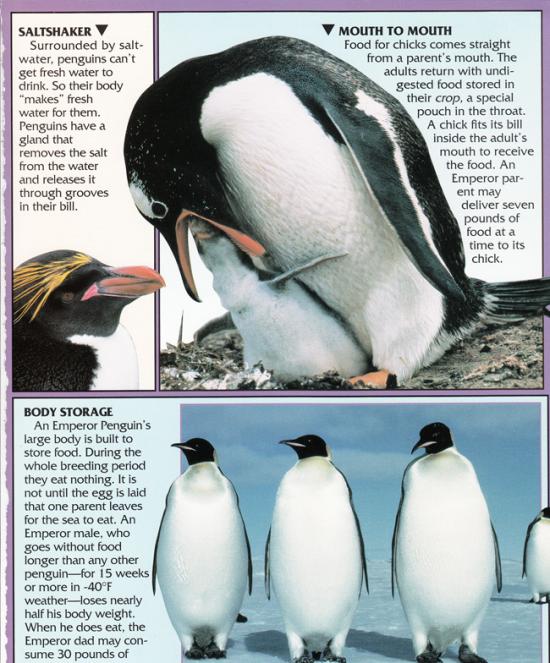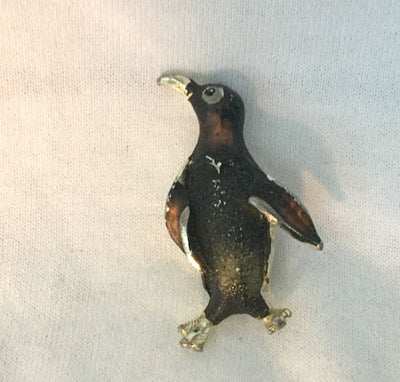All About Penguins
When one thinks of Antarctic wildlife, penguins are often the first animals that come to mind. Indeed these graceful, yet comical, hardy, yet elegant creatures are considered by many to be the signature species of the polar south. But, did you know that many penguin species live in temperate, even tropical climates? Although penguins are only found in the southern hemisphere, believe it or not their habits are about diverse as any species on earth. From the frozen Antarctic to the resort beaches of South Africa, to the jungles of New Zealand and rocky shores of South America, and all the way to the remote Galapogos Islands off the coast of Equador, penguins have adapted superbly to where ever the southern ocean currents have taken them. So enjoy this section devoted to the many penguin species and their fascinating characteristics. Early Antarctic explorers actually thought penguins were fish and classified them accordingly. In fact, as birds, they are superbly designed for their job, flying, but not in the air, underwater and with great skill. Their compact bodies have a breastbone that makes an excellent keel, and they have massive paddle muscles to propel them at speeds up to 25 miles per hour. Their heads retract to create a perfect hydrodynamic shape. When traveling quickly, penguins will leap clear of the water every few feet -- an action called 'porpoising.' This enables them to breathe, and decreases their chances of being taken by a predator. Antarctic penguins have also developed the ability to leap out of the water to a substantial height on land, enabling them to quickly reach the safety of raised ice edges or rock ledges. Penguin legs are short and set far down on their bodies, because of this they walk with a very erect posture and in most speices waddle. Ashore they are often awkward, waddling or hopping over rocks; on snow they sometimes push themselves along on their stomachs to cover great distances. Of the 17 species of penguins, only four breed on the Antarctic continent itself: the Adelie, the Emperor, the Chinstrap and the Gentoo penguins. Many other species are found within the subantarctic regions which includes many coastal islands. Penguins are also found in all southern continents and as far north as the Galapagos Islands, straddling the Equator. Penguins are true flightless birds. Some species spend as much as 75% of their lives at sea, yet they all breed on land or sea-ice attached to land. To withstand the harsh conditions of the Antarctic, their bodies are insulated by a thick layer of blubber and a dense network of waterproof plumage. Penguins' bones are solid and heavy, which help them to remain submerged and reduce the energy needed for pursuit diving. Some species can reach depths of 1000 feet or more and stay submerged for up to 25 minutes, though most prefer shorter, shallower dives. Although many penguin species along the shores and beaches of Australia, New Zealand, South Africa and South America are struggling and even endangered because of their proximity to human habitats. Some penguin species in the sub-Antarctic and Antarctic are now enjoying a population boom. Their increasing numbers can be partly attributed to the over-fishing of baleen whales in the past which has resulted in a super-abundance of krill, a key species in the Antarctic ecosystem. In addition to krill, penguins feed heavily on fish, squid, and other small crustaceans. Penguins generally breed in large, dense colonies called 'rookeries', some with 180,000 or more birds. The sights, smells, and noise of one of these huge colonies are unforgettable. Most penguins build nests of stone and there they incubate one or two eggs. Adult pairs take turns incubating their eggs and feeding the chicks once they have hatched. Communication at these crowded rookeries can be very important not only in locating mates or offspring, but also in courting rituals or signalling danger. In addition to vocal signals, penguins also communicate by head and flipper waving, bowing, gesturing and preening. Natural enemies of the penguin include seals, Killer whales, and, in the case of young chicks and eggs, several species of seabirds. Healthy adult penguins have no predators on land, so they have no natural fear of humans. While they don't like to be approached directly, these naturally curious birds will sometimes come quite close to a quiet observer to get a better look.




















King Penguins Emperor Penguins Adelie Penguins Chinstrap Penguins Gentoo Penguins Little Blue Penguins White-Flippered Penguins Magellanic Penguins Humboldt Penguins Galapagos Penguins African Penguins Yellow Eyed Penguins Fiordland Penguins Snares Penguins Royal Penguins Macaroni Penguins







